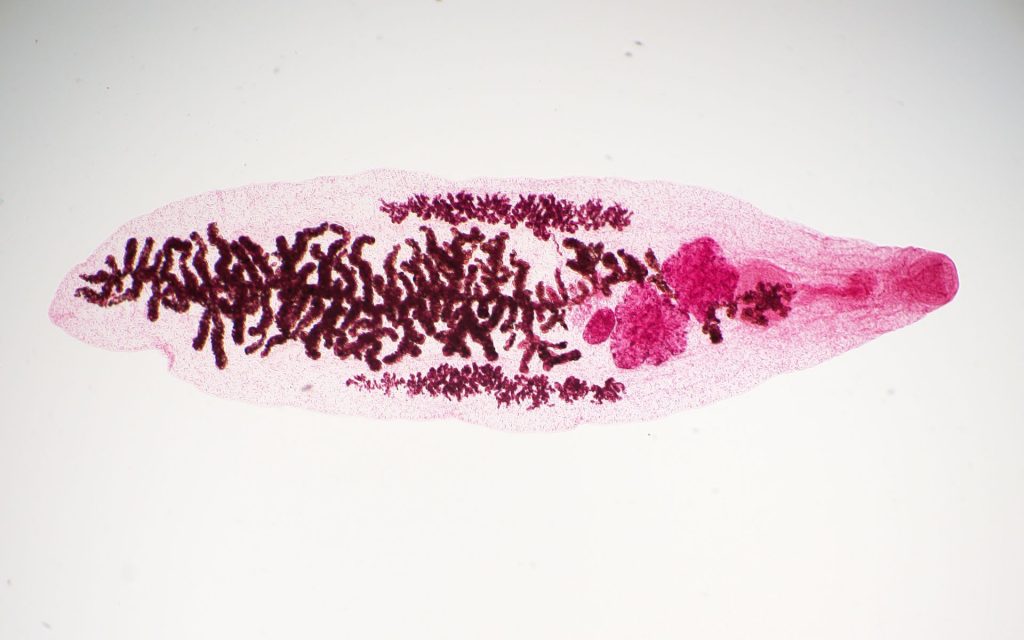For parasites, keys to survival are manipulation, sacrifice, selflessness

New research by Texas A&M University biologist Charles Criscione and collaborators in Canada shows that family ties and traits such as manipulation, sacrifice and selflessness are just as key to survival in parasitic organisms as they are in cognitive species like humans.
In essence, when it comes to successful transmission, some parasites get by with a little help from their kin.
Specifically in the case of lancet liver flukes (Dicrocoelium dendriticum), a single larva travels to and takes over its ant host’s brain, compelling the ant to cling to vegetation until it is eaten by the fluke’s next host, a grazing mammal such as cattle and deer. In a textbook example of altruistic behavior, the brain fluke sacrifices itself to ensure the survival of its relatives, who co-infect the same ant’s abdomen. Ant exposure via vegetation ensures transmission of the abdomen flukes, who live on by infecting the mammal’s bile ducts, where they sexually reproduce and send the next generation of parasite progeny out into the world ensconced in host feces.
For more than 40 years, scientists have hypothesized kin selection — the evolution of traits that favor survival of relatives — to explain the brain fluke’s noble self-sacrifice.
“It was presumed that genetically identical individuals, which we call clonemates, can end up in the same ant because in the snail first host, there is an asexual reproductive stage of the parasite,” Criscione said. “Many larval parasites that are clonemates are released from the snail in a slime ball that ants like to eat. However, no one has tested the clonal relationships of the parasites co-infecting ants, especially between the brain fluke and abdomen flukes.”
Criscione notes population genetic methods examining clonal dynamics in fluke parasites, or trematodes, didn’t become common until the early 2000s, with that data actually indicating clonemates were rare in fluke systems. Therefore, it was necessary to test their de facto adaptive story. Criscione and colleagues John Gilleard and Brad van Paridon (University of Calgary) and Cam Goater (University of Lethbridge) did just that, and they now have the data to prove it.
In their study that measured genetic relatedness between brain and abdomen flukes within ants, the team was able to show not only that clonemates simultaneously occur in the same ant much more often than expected by chance, but also that the brain fluke commonly has clonemates within the same ant. Their research, currently published online and set to be included in next week’s issue of the Proceedings of the National Academy of Sciences, provides rare genetic evidence to support a role for kin selection in the evolution of an altruistic, host-manipulating behavior that facilitates parasite transmission and as an evolutionary explanation for similar behaviors that improve the odds of survival and reproduction among genetically related family members.
“The lancet fluke is an extreme example of kin selection in that the asexual reproductive stage of the parasite in its snail host has enabled the highest degree of genetic relatedness; i.e., clonality,” Criscione said. “While our data confirm the original hypothesis in that we find lots of clonemates and that these clonemates co-infect the same ant, our study also reflects the important need in science to collect hard data where possible to test our hypotheses regardless of how intuitive something may seem, especially in iconic systems such as the lancet fluke.”

